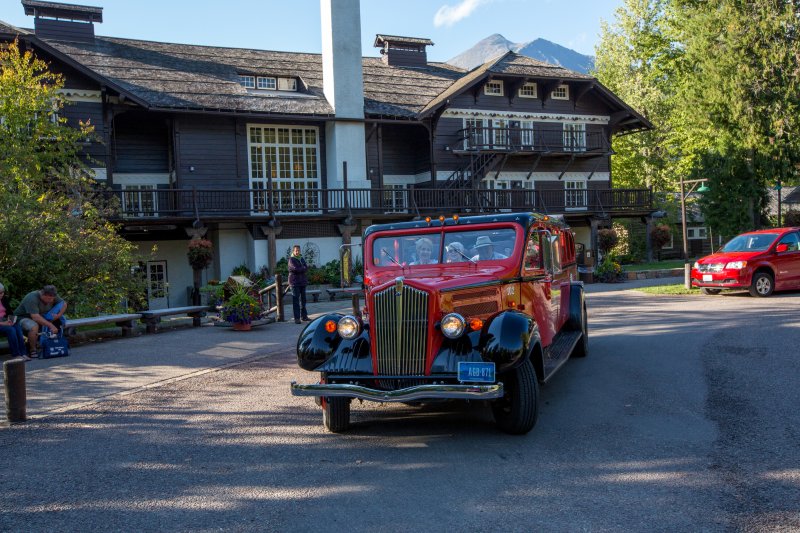100 YEARS OF SERVICE
Roe Emery (1875-1953) was one of two principals behind the creation of Glacier’s iconic Red Buses. Emery and Walter White, a vice president of the Cleveland-based White Motor Company, which built the Red Buses, introduced transportation to the park in 1914.
Many in the current fleet of Red Buses have been in service since the mid-1930s. The Red Buses were the first authorized motor transportation utility in any National Park.
In 1936, with park reservations up more than 70 percent above 1935 levels, 18 new buses joined the fleet. The purchase was made from the White Motor Company for a price of $90,000.00.
The buses featured outside doors opposite each row of seats. A special feature included with this model was a roll-back top providing unobstructed sightseeing. This design was made by Count Alexis de Sakhoffsky, an industrial stylist in cooperation with officials of the White Motor Company and the Bender Body Company. The Red Buses have an oak, not metal, frame which support their bodies.
Here are some fast facts about the iconic Red Buses:
- The color of the Red Buses comes from the Ripe Mountain Ash Berry in Glacier N.P.
- The Red Buses run on gasoline and propane, which is 93% cleaner.
- The first transportation in Glacier was by means of four horse coaches of 11 passenger capacity.
- The Red Buses of Glacier were made by the White Motor Company and are Model 706.
- The Going-to-the-Sun road was first opened on July 15th, 1933
- Most of the roads on the East side of Glacier N.P. were built by the Great Northern Railroad.
- There were over 500 White Model 706’s made for different national parks in the US
- During the early years of touring, women were discouraged from riding in front because they distracted the male drivers.
- The drivers are called “Jammers” because they could be heard “Jamming” the gears of the red buses going up Going-to-the-Sun Road when the buses had standard transmissions.
- The Red Buses originally cost $5000 each back in 1936.
- The first official “Jammer Manual” was put together by George Ruhle, a Naturalist at Glacier N.P.
- No tours were offered in Glacier between 1943 and 1946 due to fuel rationing caused by the second World War.
- The first female Red Bus driver in Glacier was in the early 1980’s.
- The Red Buses received their first automatic transmissions in 1989.
- The Red Buses of Glacier are nicknamed “The Rubies of the Rockies”
- From 1914 through the 1970’s all Red Bus drivers were college-aged men, mostly in Pre-Law or Pre-Med
- On the bottom of the grill of the Red Buses, you can still see the area were the crank start used to be.
- Of the 33 buses on the road today, 17 are from 1936, 11 are from 1937, 4 are from 1938 and 1 is from 1939.
- The bus numbers represent the order in which they arrived in the park. For example, bus number 97 was the 97th vehicle to be put into service in Glacier.
- In 2006, a Red Bus from Glacier National Park, was featured in the Rose Bowl Parade in Pasadena, California.
- In 2016, Secretary of the Interior Jewell traveled to Glacier National Park and rode a Red Bus to help kick-off the National Park Service’s 2016 100th Anniversary Celebration.
- The Red Buses, on average, transport 60,000 tourist each summer through Glacier N.P.
- The first Transportation Manager in Glacier was A.K. Holmes in 1914.
- In addition to touring guests around Glacier, the buses have also served as evacuation vehicles in times of fire or flooding.
- Ford Motor Company donated over $6 Million to restore 33 buses to keep them in operation.
- 2011 marked the 75th anniversary of the 1936 buses giving tours in Glacier National Park.
- The Model 706 White Buses are the third generation of touring buses in Glacier National Park.
- The fleet of 33 buses in Glacier are widely considered to be the oldest touring fleet of vehicles anywhere in the world.
- Each red bus is estimated to be worth $250,000.


